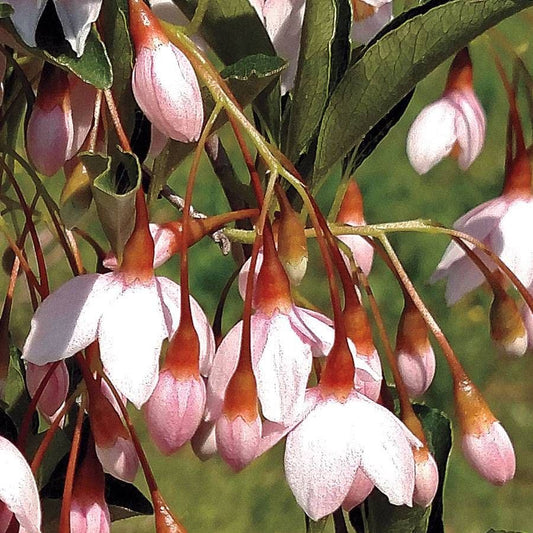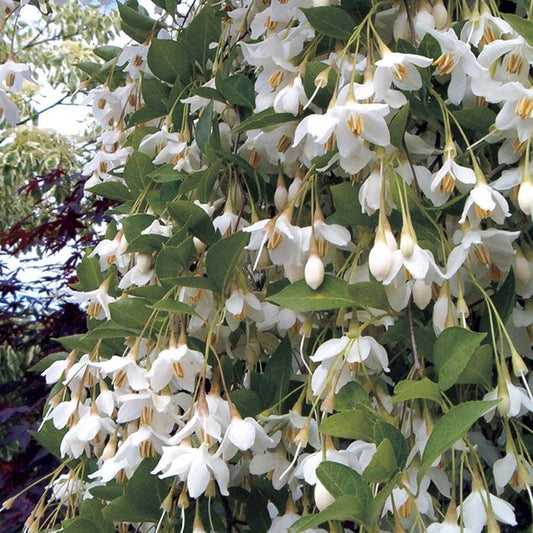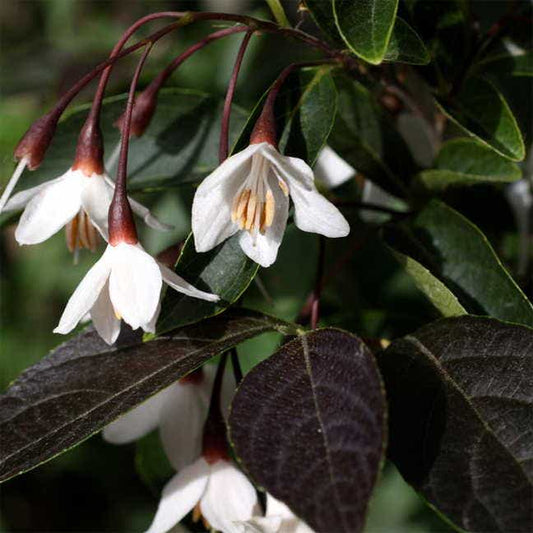Japanese Snowbell Trees
The Styrax genus contains flowering shrubs and trees, commonly called snowbells, that have a naturally beautiful form and offer multi-season interest. In late spring to early summer, snowbells team with bell-shaped, mildly fragrant, white, or pink flowers with yellow stamens.
-
Marley's Pink® Japanese Snowbell
Regular price $101.95Regular priceUnit price / per -
'Fragrant Fountain' Japanese Snowbell
Regular price $118.95Regular priceUnit price / per -
'Evening Light' Japanese Snowbell
Regular price $100.95Regular priceUnit price / per
Japanese Snowbell Trees
Snowbells offer 4 seasons of interest
Styrax attract bees, butterflies, and hummingbirds. The flowers are typically borne either in dripping clusters of delicate blossoms or in racemes of larger individual blooms. Flowers eventually give way to dry, olive-shaped, greenish-brown drupes that often persist into late autumn. Foliage takes on fall color, and smooth brown or gray bark becomes furrowed with age, creating interlacing orange-brown fissures, which add winter interest.
Styrax is a genus of 100 or so species that grow up to 15 to 30 feet tall and 20 feet wide. S. japonicus (Japanese snowbell, silver bells) and S. obassia (fragrant snowbell, big-leafed styrax) are highly popular varieties for home gardens. Some varieties can be grown as a bushy shrub or pruned as a tree. Any desired pruning should be done in winter after the plant goes dormant, as they bloom on old wood. Plant in well-aerated, amended soil in full sun to part shade. Snowbells require consistent moisture and shouldn’t be allowed to dry out completely, but they are virtually pest and disease free. Use as specimens in small spaces or as an understory tree. Some species, like S. obassia, also make great street trees.


